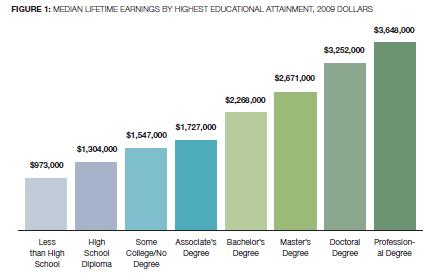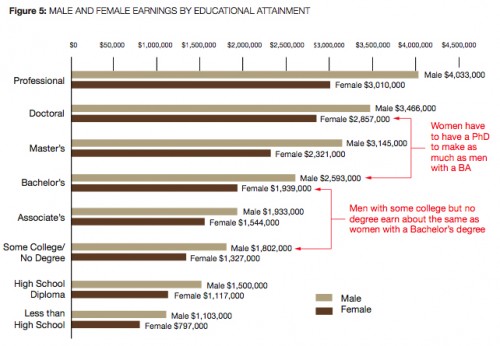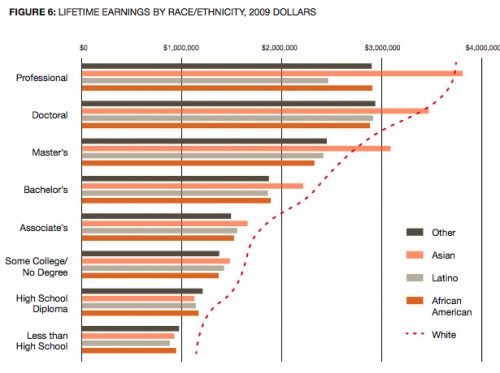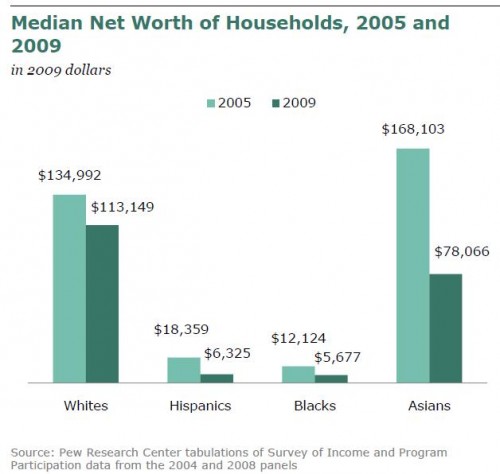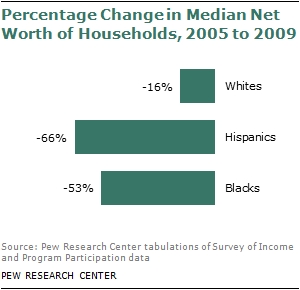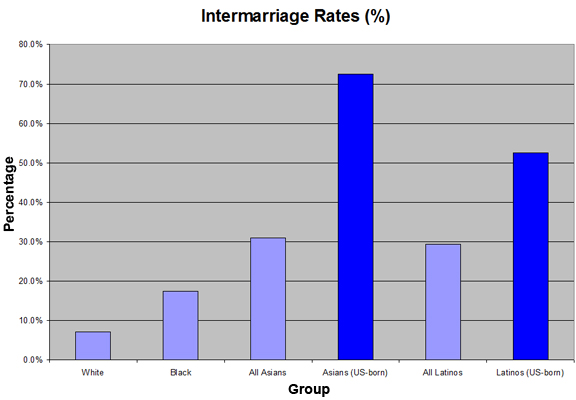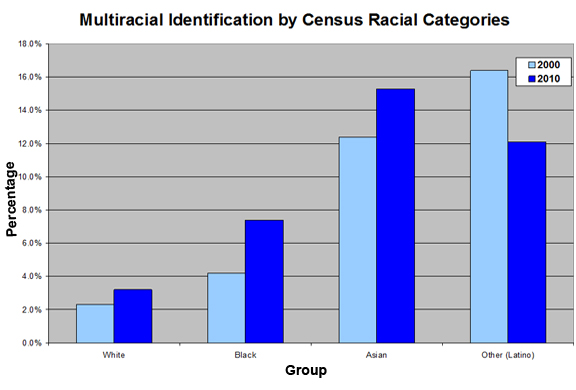Kelsey C. sent in a some great data from the Bureau of Labor Statistics that helps illustrate why variance matters as much as a measure of the average. The figure shows the median income by race and education level, as well as the typical earnings of each group’s members in the third quartile (or the 75th percentile) and first quartile (or the 25th percentile). What you see is that the median earnings across these groups is different, but also that the amount of inequality within each group isn’t consistent. That is, some groups have a wider range of income than others:
So, Asians are the most economically advantaged of all groups included, but they also have the widest range of income. This means that some Asians do extremely well, better than many whites, but many Asians are really struggling. In comparison, among Blacks and Hispanics, the range is smaller. So the highest earning Blacks and Hispanics don’t do as well relative to the groups median as do Whites and Asians.
Likewise, dropping out of high school seems to put a cap on how much you can earn; as education increases it raises the floor, but it also raises the variance in income. This means that someone with a bachelors degree doesn’t necessarily make craploads of money, but they might.
Lisa Wade, PhD is an Associate Professor at Tulane University. She is the author of American Hookup, a book about college sexual culture; a textbook about gender; and a forthcoming introductory text: Terrible Magnificent Sociology. You can follow her on Twitter and Instagram.


